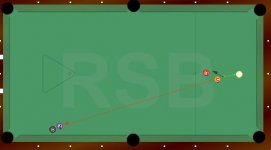As has been discussed already here, the best strategy in 8-ball is to run out, but there will be a percentage of games when the layout is too tough.
Someone here has already mentioned the importance of kicking. There is also the situation where a ball is over a pocket, blocking your own. I'll usually look for a way to put my ball onto that ball and get a snooker.
That said, I think my safety / defensive knowledge is pretty limited. I would appreciate some advice from experienced US 8-ball players on strategical insights and usefull training drills to help learn the application of these.
Wish I had some video btw. Accu-stats only has VHS tapes which I can't use. If anyone has some good 8-ball DVD's or digital files I'd love and would pay for some.
Anyone with an FTP site with some available?
Someone here has already mentioned the importance of kicking. There is also the situation where a ball is over a pocket, blocking your own. I'll usually look for a way to put my ball onto that ball and get a snooker.
That said, I think my safety / defensive knowledge is pretty limited. I would appreciate some advice from experienced US 8-ball players on strategical insights and usefull training drills to help learn the application of these.
Wish I had some video btw. Accu-stats only has VHS tapes which I can't use. If anyone has some good 8-ball DVD's or digital files I'd love and would pay for some.
Anyone with an FTP site with some available?
